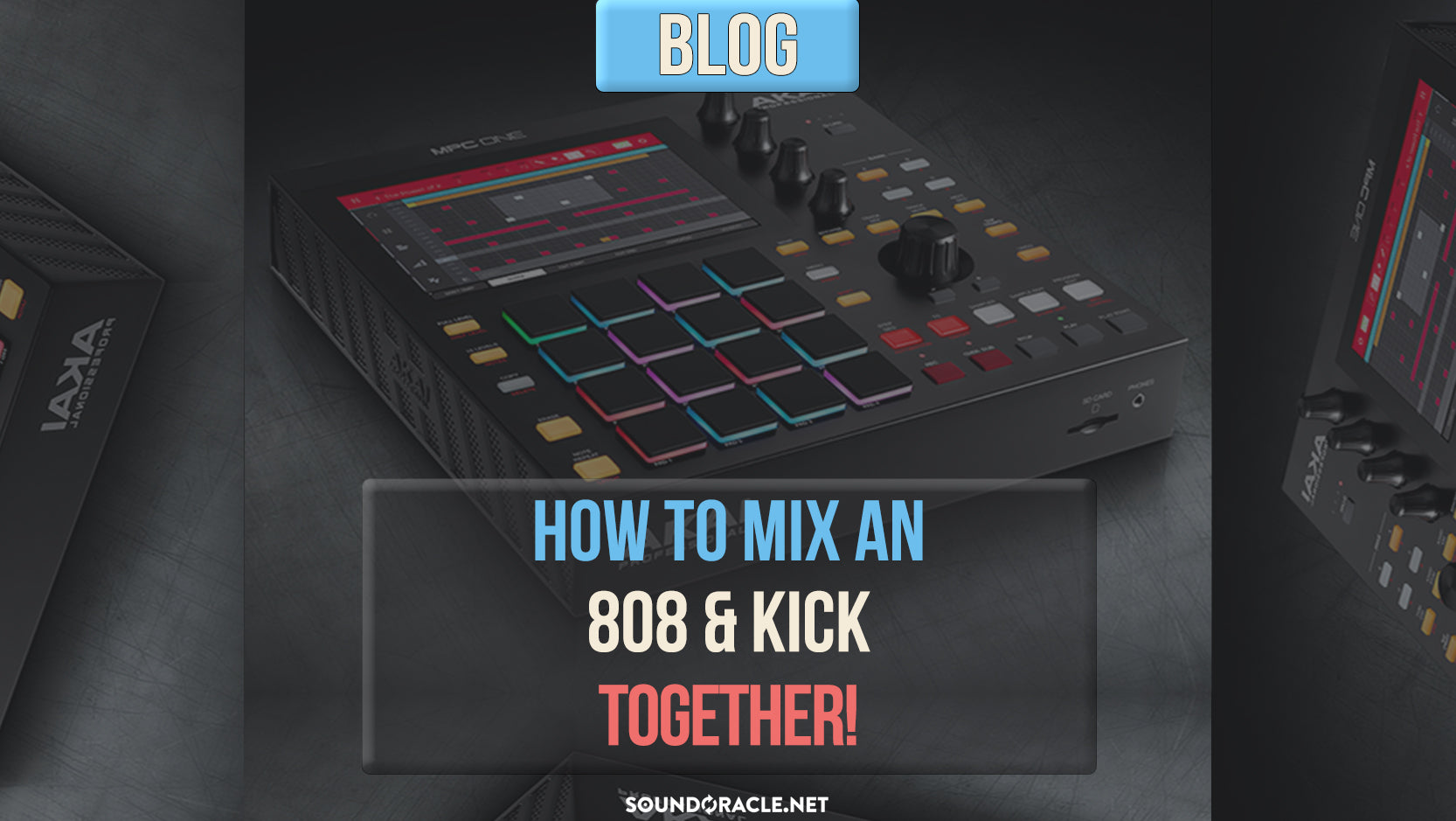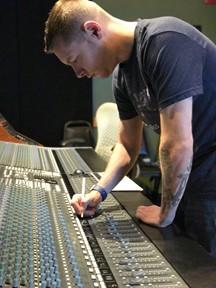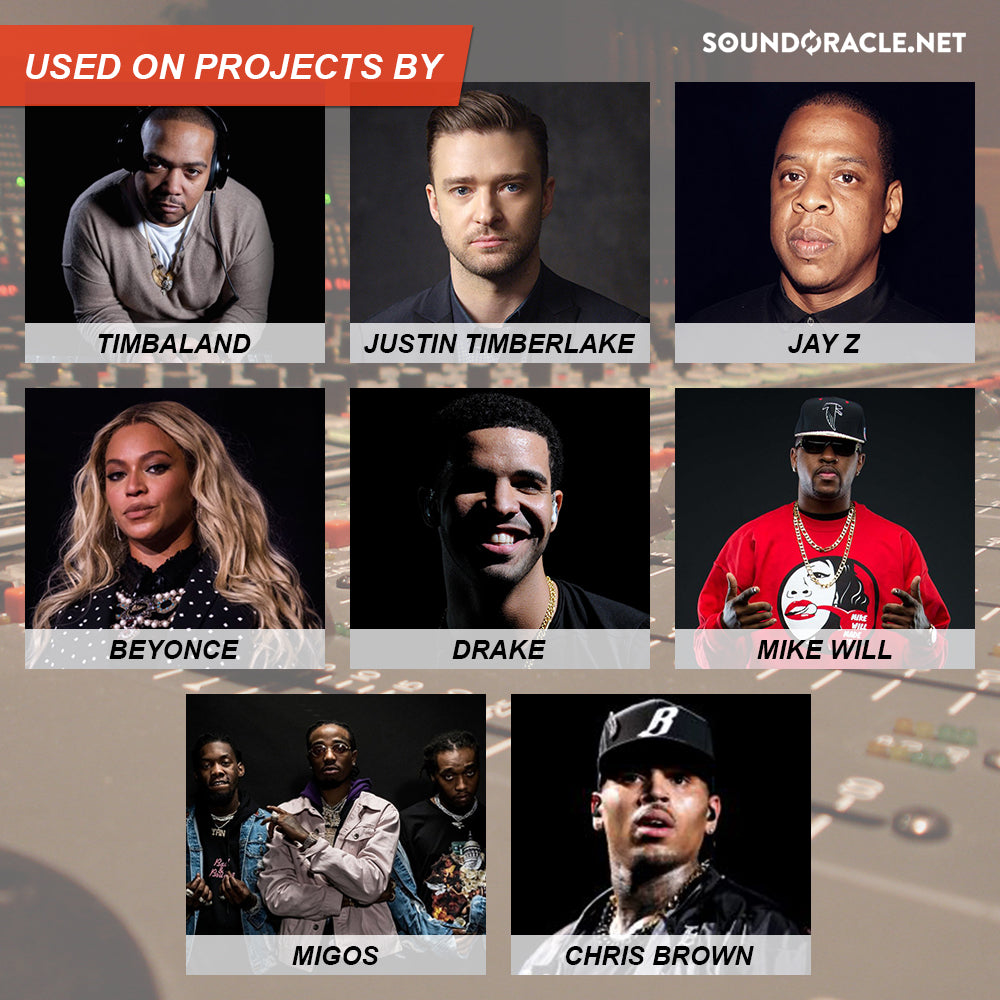How To Mix an 808 & Kick Together!

How To Mix an 808 & Kick Together!
808s & kicks go together like peanut butter & chocolate, but they fight each other like Kanye West & Taylor Swift. That’s because both 808s & kicks have low-end fundamental frequencies in common & they’re both greedy when it comes to taking up the lower range of the frequency spectrum. The good news is there are a few things we can do to help them get along better. Each 808 & kick mix is different, so you’ll have to make adjustments & tweaks in each mix, but these tips can help get you in the right direction.
Finding The Right 808 & Kick

Choosing the right samples is one of the most important things that need to be taken into consideration. You want to find a kick & 808 that sound good together without having to do much else to it. The rest of the steps will be fairly easy then! It’s like choosing fresh ingredients when you’re cooking; you’ll have a better shot at a tasty meal that way!
One key thing to consider is the length of your kick sample compared to the length of your 808 samples. In the picture above we see that the 808 sample has a long tail, while the kick sample has a short tail & ends quickly. This will help these two instruments fight a lot less because the kick is starting & ending so quickly & there is less time for it to clash with the 808 frequencies. Below is a picture of a kick with a long tail & that particular kick may not be the best fit to blend with an 808. Usually, a kick like that is better off without an 808 & that kick can dominate the low end as a solo act.

Another thing to consider is which instrument do you want to dominate low sub & which instrument do you want to be the attack & punch? Some 808s are filled with sub-frequency information, while others are more distorted & mid-range focused. If you’re using an 808 that is more sub-frequency focused, then you will want to search for a kick that isn’t filled with too much low end. If you’re using an 808 that’s more mid-range focus & doesn’t have a lot of sub information, then a kick that has a nice rich low end is the way to go.
Balancing The Volume Levels

Before we get into EQ & compression, the volume levels you have set is a top priority & should be accounted for first. A lot of times the untrained ear wants to have both the 808 & kick be super loud; however, if you study & listen closely to the mixes of mainstream artists like Migos, Drake, or Lil Baby, you’ll notice that the bass & kick are not hitting quite as hard as you may think. That’s because their engineers know that the low end will play a big role in the final headroom & a lot of clashing can occur when there’s too much low end going on.
The thing that we need to think about is which instrument of the two is most important in the mix to be heard. You’ll want to have one instrument to be louder than the other. It all depends on what each instrument sounds like. Let’s say that the 808 is a more sub based & low-end heavy sample & the kick is punchy & tight. In a case like that, we will want the kick to be heard & the 808 to be felt. We would have the kick be a little louder in the mix & the 808 be a little lower in the mix. This will be key when it comes to balancing these two instruments & it will greatly help avoid clashing. There are still ways to get your 808 to be heard with some parallel processing though & it deals with exciting the mid-range on the parallel channel. We don’t want to make this blog too long, so we won’t go into full detail on that subject, but we do have a free video on YouTube about that subject!
You can watch that here.
Cutting Frequencies To Create Pockets
As we know, both these instruments share common fundamental frequencies with each other. It can be a big help to cut some frequencies on one instrument to give the other instrument some breathing room.
For instance, the above picture is the EQ that’s on a kick drum. If we want the 808 to dominate the sub-frequencies, then there are some sub-frequencies we should carve out in the kick drum. On the kick, we used a high pass filter around 35Hz to cut some of the rumbles that are in the kick sample. This is typically a frequency area that we won’t need in the kick drum anyways & it can cause clashing if it’s there. Another thing we’re doing on this EQ is we are cutting around 60Hz by about -1.5dB. 60Hz is an area where the 808 may be best felt & so we will want to cut that area out of the kick drum, so the 808 can enjoy that space even more. It won’t always be 60Hz though. It all depends on the 808 samples you’re using. Sometimes it may be 60Hz, 50Hz, 75Hz, 30Hz, or any other area in the low end. To figure out what area your 808 is dominating, put a plugin on the 808 channel that has a spectrum analyzer on it; a lot of times it’s an EQ. Take a look at what area has the biggest spike on the screen & that will tell you what frequency the 808 is dominating. Then, just go to your kick & cut the frequency by a little bit.
As you can see in the picture below, the kick drum also has a spike around 60Hz, so it’s going to help give the 808 some more space to breathe by cutting that area on the kick drum.

Just like the kick drum EQ, we will want to do some cutting on the 808 EQ. We’ll take the same steps we did with the kick drum. We will take a look at the EQ on the kick drum, figure out what frequency is most dominating, then go to the 808 EQ, & cut that frequency area by a little bit. For this particular case, the kick drum was dominating around 86Hz, so we cut that area on the 808 by -1.25dB. It won’t always be 86Hz though. The low end of kick drums usually dominates somewhere between 75Hz-95Hz. You’ll just have to search for it.

You may notice in the above picture that the 808 is taking up a lot of low end information, so
choosing this instrument to be our sub-frequency space was a good choice. It starts to dip a little
bit around the area that we’re cutting at 86Hz, but there is still a small spike where it starts to slope
off. By cutting 86Hz by a little bit, we have now created a pocket & some breathing room for the
kick.
We also have full breakdowns of the fundamental frequencies of each individual instrument on our YouTube channel.
You can watch “Kick Drum Fundamental Frequencies” here!
You can watch “808 Fundamental Frequencies” here!
Side Chain Compressing The 808
For our final step, we are going to use a compressor to duck the 808 down a bit whenever the kick drum strikes. We recommend using a multi-band compressor for this technique because it will allow you to compress only a certain frequency area of the 808 instead of all of it.
The first thing we want to do is pull up a “send” on the kick drum channel. We will need this because we want to tell the compressor that it only needs to react when the kick drum strikes down.

On your compressor that’s on your 808 channel, you will want to go to the “key input” area & select your kick drum channel as the “key input”. This is going to let the compressor know which source it needs to react to.

Next, you will need to tell the compressor that it’s the external source that is controlling the compressor & not the internal source. That way the compressor won’t react when the kick drum isn’t playing.

Just like we did with the EQ, we want to compress down the area where the kick drum is dominating the most. That will lower that area on the 808 & give the kick drum more space in the mix. Usually, a fast attack time & a medium release are good settings to go for with this technique. The faster attack time will tell the compressor to react right away. To set the release you want to time it to end just a little bit after the tail of the kick drum ends. This will help avoid pumping, but also it won’t compress the 808 too long. As far as the threshold, try to aim for about 3 to 4dB of gain reduction.
What we just did with this compressor trick was we set it up so that every time the kick drum strikes, the 808 lowers in volume just a little bit. This will help give us some more space & less clashing in the mix! The great thing about using a multi-band compressor is we’re only compressing the selected frequency down. We still maintain our deep low sub frequency that’s being uncompressed.

If you would like a video explanation of this entire process, we have that video available on YouTube channel & that can be found here!
JOIN MY UNQUANTIZED PODCAST COMMUNITY
Don't miss out Unquantized Podcast Live & Interactive by @soundoracle + @triza starting at 4 pm every Friday @IG !!!
YouTube `
Instagram
Realistic Production - Engineer
Realistic is a Music Producer and Engineer located in the Twin Cities. He has been producing music for Hip-Hop & Pop music since 2004. In 2017 he graduated with an AAS in Music Production & Engineering. Real is the chief mixing engineer for SoundOracle.net where he mixes all loops & sounds found on the site & also provides mixing & mastering services on the site to artists & producers.
CONNECT WITH REALISTIC
Website: www.realisticproductions.net
IG: @RealisticProductions
Twitter: @Realistic_Pro
FB: @RealisticProductionsLLC
Apple Music, Spotify, SoundCloud, etc. - https://fanlink.to/bwW5

THE ART OF VOCAL MIXING VIDEO COURSE
Learn how Auto-Tune & Melodyne Work!
These days it's pretty standard for a vocal mix to have some form of pitch correction applied to them.
That's why we felt it so was important for us to dedicate entire chapters to both Auto-Tune & Melodyne.
We'll show you how every parameter & tool works in both of these powerful software's & we even show you some fun FX you can create with both software!
The Art Of Vocal Mixing is our brand new online course & it's packed with over 150 videos & 14 hours of professional mixing skills & techniques.
What's included?
THE ART OF BEAT MIXING VIDEO COURSE
Producers have eagerly been awaiting this groundbreaking video course & it's finally available to access.
Giving your beats a professional mix is a standard that's expected from major labels & publishing companies when trying to get your beats placed.
Our brand new coursework will teach you everything you need to know to ensure your beats have an outstanding mix & loud clean master.
Save thousands of dollars by not having to enroll in school & save hundreds of hours from watching the wrong the tutorials.
What's included?




